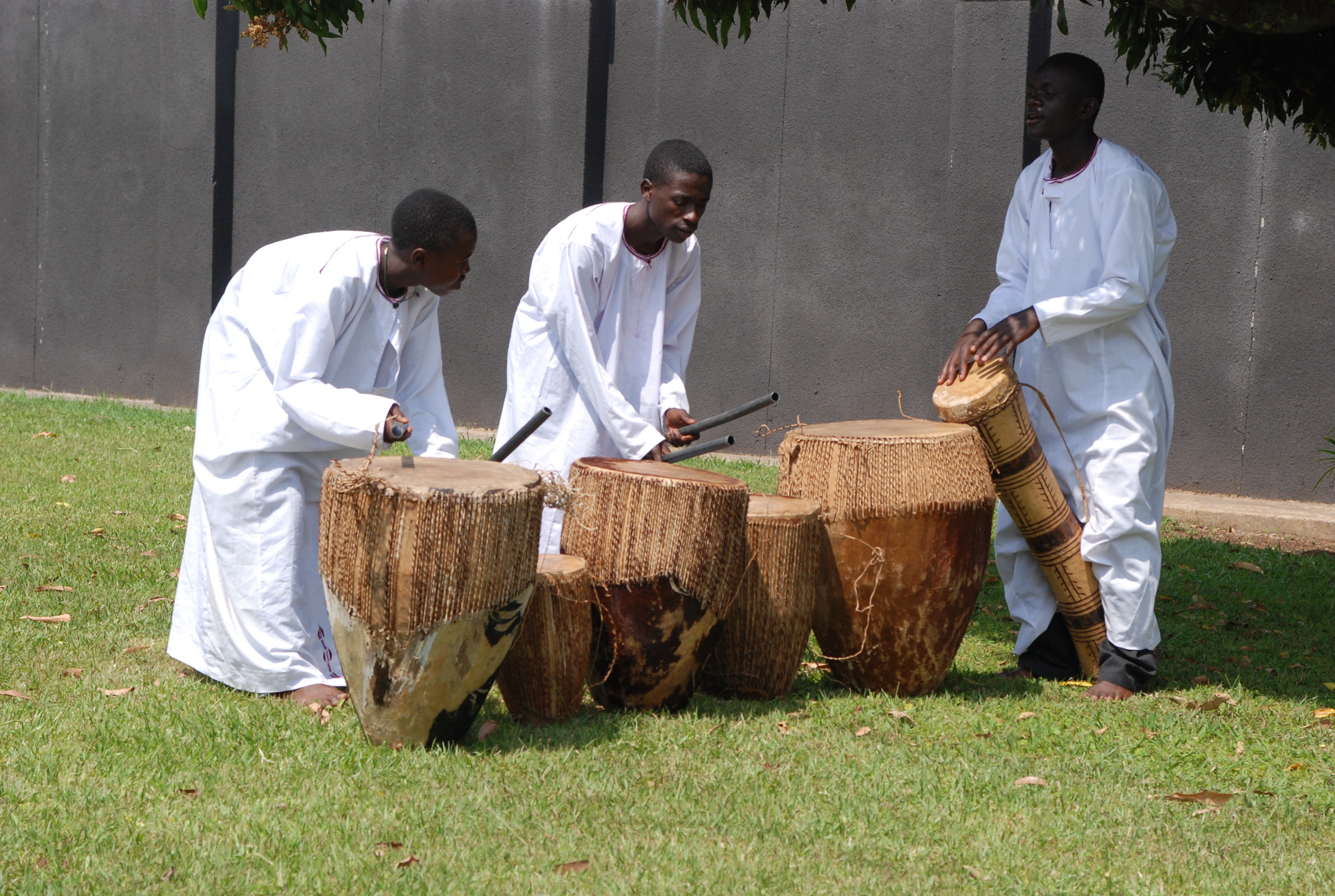Orunyege-Ntogoro on:
[Wikipedia]
[Google]
[Amazon]



 Orunyege-Ntogoro is a traditional dance from the
Orunyege-Ntogoro is a traditional dance from the 


 Orunyege-Ntogoro is a traditional dance from the
Orunyege-Ntogoro is a traditional dance from the Bunyoro
Bunyoro or Bunyoro-Kitara is a Bantu kingdom in Western Uganda. It was one of the most powerful kingdoms in Central and East Africa from the 13th century to the 19th century. It is ruled by the King (''Omukama'') of Bunyoro-Kitara. The current ...
and Tooro kingdoms in western Uganda
}), is a landlocked country in East Africa
East Africa, Eastern Africa, or East of Africa, is the eastern subregion of the African continent. In the United Nations Statistics Division scheme of geographic regions, 10-11-(16*) territor ...
. It is a courtship dance that involves the use of rattles (ebinyege) and rings (entogoro) to produce rhythmic sounds and movements. The dance is performed by young men and women who seek to attract and impress potential partners for marriage.

History
Orunyege-Ntogoro is a combination of two dances: Orunyege and Ntogoro. Orunyege comes fromHoima
Hoima is a city in the Western Region of Uganda. It is the main municipal, administrative, and commercial center of Hoima District. It is also the location of the palace of the Omukama of Bunyoro.
Location
Hoima is approximately , by road, nort ...
and Fort Portal
Fort Portal or Kabarole is a city located in the Western Region of Uganda. It is the seat of both Kabarole District and historically of the Toro Kingdom.
Location
Fort Portal in Kabarole District is located approximately by road, west of Kampal ...
districts, while Ntogoro comes from Masindi district. The two dances have similar origins and characteristics but differ in some respects. Orunyege is more energetic and acrobatic, while Ntogoro is more graceful and elegant.
The dance dates back to the pre-colonial era when the Bunyoro and Tooro kingdoms were powerful and influential in the region. The dance was a way of celebrating the culture and identity of the people, as well as expressing their love and affection. The dance was also a means of socialization and entertainment, as the young people would gather in the evenings and dance under the moonlight.
Performance
Orunyege-Ntogoro is performed by two groups of dancers: the male dancers (abakwongezi) and the female dancers (abakwetegerezi). The male dancers wear shorts and shirts, and tie rattles (ebinyege) made of dried gourds or calabashes on their legs. The female dancers wear long skirts and blouses, and tie rings (entogoro) made of beads orcowrie shells
Cowrie or cowry () is the common name for a group of small to large sea snails, marine gastropod mollusks in the family Cypraeidae, the cowries.
The term ''porcelain'' derives from the old Italian term for the cowrie shell (''porcellana'') du ...
on their waists. The rings are used to accentuate the movements of the hips, while the rattles are used to create sounds that match the drumbeats.
The dance is accompanied by drums, flutes, and xylophones. The drummers play different patterns and rhythms, depending on the mood and tempo of the dance. The flutists and xylophonists play melodies and harmonies that add to the musicality and beauty of the dance. The dance is led by a master of ceremonies (omukama), who sings and chants praises and jokes to the dancers and the audience.
The dance consists of several steps and formations, such as circles, lines, and pairs. The dancers move in sync with each other, following the cues of the master of ceremonies and the drummers. The dancers also improvise and showcase their individual skills and styles, such as spinning, jumping, and shaking. The dance is a display of agility, coordination, and creativity.
Significance
Orunyege-Ntogoro is a dance that reflects the culture and values of the Bunyoro and Tooro people. It is a dance that celebrates life, love, and joy. It is a dance that fosters social cohesion and harmony among the people. It is a dance that preserves and promotes the heritage and identity of the people. Orunyege-Ntogoro is also a dance that has a practical and educational purpose. It is a dance that teaches the young people about the norms and expectations of their society, especially regarding courtship and marriage. It is a dance that allows the young people to interact and communicate with each other, and to express their feelings and emotions. It is a dance that helps the young people to find and choose their suitable partners for marriage.References
{{reflist Culture of Uganda Dance in Uganda African dances Tooro Kingdom